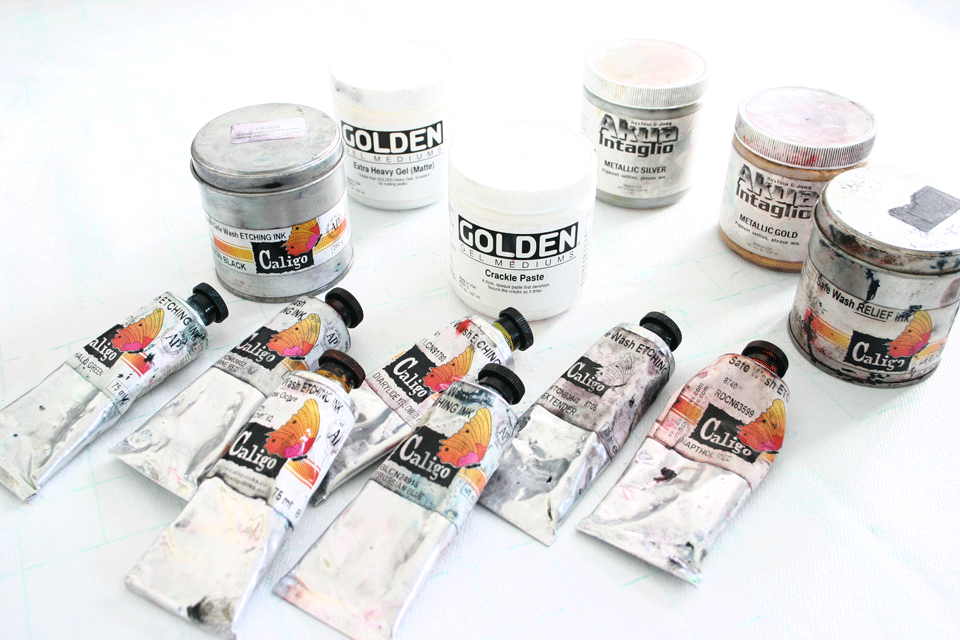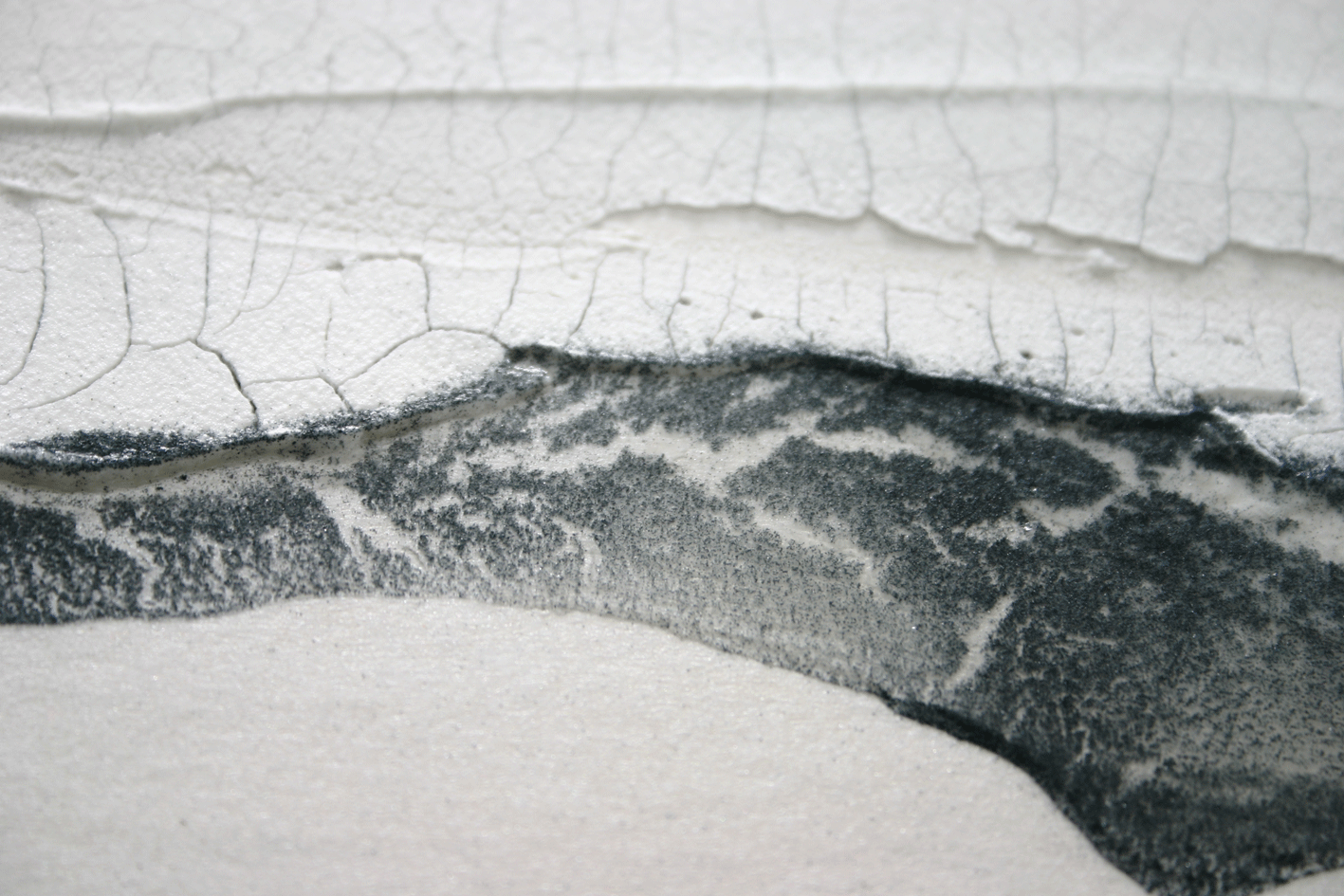Like most printmakers, I don’t have the room or the money to create a print studio at home. However, I do create my printing plates there, on the dining room table. To print the plates, I transport my inks, paper and other paraphernalia the one hour journey to the Print Room at The Ropewalk in Barton upon Humber. As my printmaking has become more ambitious and the size of the prints has increased, it has meant carting a lot of stuff with me, the most important element being ‘the box’.
What’s ‘the box’, and what’s in it?
The box is an ordinary small DIY toolbox, bought from one of the DIY chains. It’s sturdy, has a removable top tray inside and space for deeper items below. I haven’t named it yet, but I don’t rule out the possibility.
Above, I’m working on a plate, with some of the box contents close at hand.
Above are some of the contents of the inner tray. On the left and at the bottom are simple shaping tools obtained from art or craft shops. Where I live, The Range is a particularly good source, but most will have useful tools like these. They’re cheap and do the job of building, moulding and shaping textures really well. I have a lot of smooth-edged ones here, but the serrated one is great for introducing interesting edges to PVA or household filler.
On the right is half a comb. This is great for dragging lines through household filler that’s still wet. You can increase the gaps in the lines by removing more teeth!
Above, I’m using the wide plastic shaping tool to spread some crackle paste onto a plate. This was the plate I described being worked on in the ‘Lincolnshire Coast’ series of prints.
This is the stuff that lives in the bottom of the box, under the tray.
It contains my inks and pastes. For the inking most plates, I use Caligo ‘Safe Wash’ inks. These are oil-based inks, so they have all the density of traditional inks, but they can be washed up using soap and water. This makes the process of cleaning the plate, tools and brushes after printing much faster.
The gel and crackle paste (towards the back) are very interesting. I recently discovered them after chatting to a fellow printmaker. These are used to add texture to a plate. You can build up thickish areas using the shaping tools, or even spread them around with your hands (see above).
The crackle paste shrinks as it dries to leave the fine cracks you can see above. It’s really fun to work with, and produces textures so beautiful that often the plates are sometimes more interesting than the prints!







